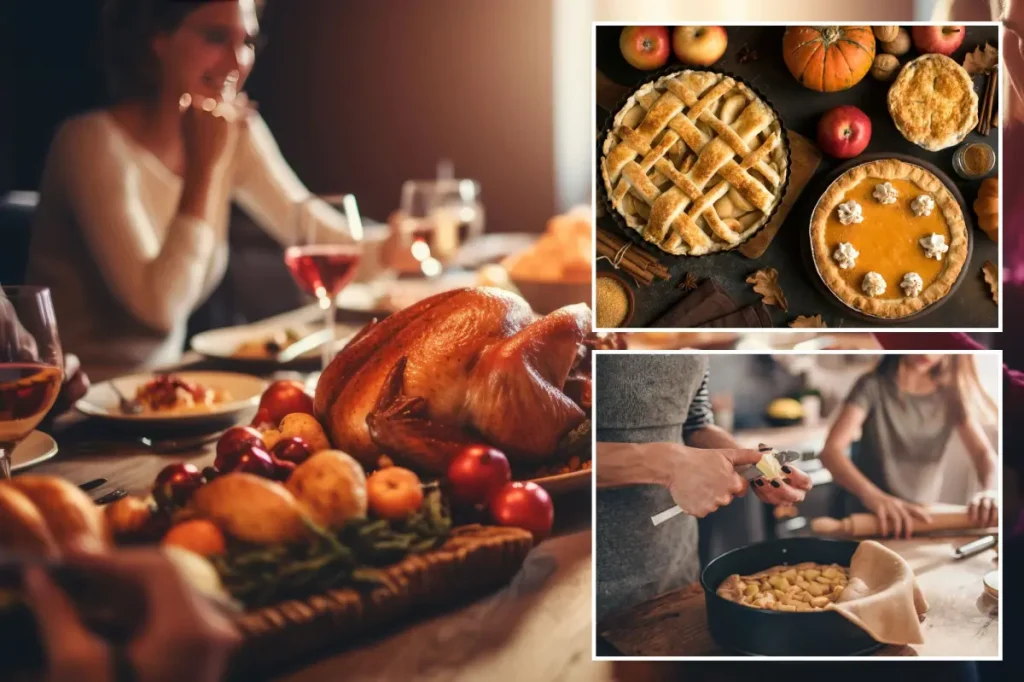The Great American Pie Debate: Pumpkin vs. Apple at Thanksgiving
Thanksgiving dinner tables across America feature a friendly yet passionate rivalry that emerges every November: the battle between apple pie and pumpkin pie for dessert supremacy. While apple pie holds the title of America’s classic favorite for most of the year, the humble pumpkin pie stages a remarkable seasonal comeback when fall leaves begin to turn. At Chicago’s beloved Hoosier Mama Pie Company, owner and chef Paula Haney witnesses this phenomenon firsthand. Her bakery serves apple pie year-round to avoid customer disappointment, yet come Thanksgiving, pumpkin pie dramatically outsells apple nearly two-to-one. This temporary shift in America’s pie preferences reflects something deeper than mere taste—it speaks to our collective connection with tradition, seasonality, and the emotional resonance certain foods carry during the holidays.
National surveys confirm this fascinating seasonal preference flip. A YouGov poll of nearly 10,000 Americans revealed that 29% favor pumpkin pie at Thanksgiving, while apple pie follows at 20%, with pecan pie rounding out the top three at 14%. Grocery delivery giant Instacart’s data paints an even more dramatic picture—pumpkin pie orders surge over 2,600% the day before Thanksgiving, drastically outpacing all other flavors. Regional preferences also emerge from the data, with Southern states gravitating toward sweet potato and pecan varieties, while parts of the Midwest show affection for creamy French silk chocolate pies. These geographic preferences highlight how deeply pie choices are intertwined with local cultures and available ingredients. In Chicago, there’s even a sense of local pride associated with pumpkin pie, as chef Haney points out that approximately 90% of America’s canned pumpkin is grown in Illinois.
The enduring popularity of pumpkin pie may have less to do with its actual flavor profile and more with its powerful connection to holiday tradition. Food Network personality and Kentucky chef Jason Smith suggests that many people don’t actually enjoy the texture of pumpkin pie, yet they insist on its presence at Thanksgiving gatherings because “it’s just not Thanksgiving without it.” This illustrates how certain foods transcend mere taste preferences to become essential symbols of tradition and continuity. For many American families, the appearance of pumpkin pie signals that the holiday season has officially begun, creating a sensory connection to past celebrations and childhood memories that runs deeper than culinary satisfaction alone. The pie becomes a portal to holiday nostalgia—its distinctive aroma and appearance more meaningful than its taste.
Despite being primarily associated with autumn holidays, pumpkin has developed a dedicated following that extends beyond seasonal boundaries. Haney notes that customers request pumpkin pie even in July, and any pumpkin-flavored baked goods—from muffins to scones—sell exceptionally well whenever offered. Pumpkin’s versatility as an ingredient contributes to its appeal; it adapts beautifully to various dessert formats. At Hoosier Mama Pie Company, pumpkin appears in light chiffon pies, spicy ginger-infused cheesecakes, chocolate-swirled chess pies, and even in fusion creations like sour cream Dutch apple pie with walnuts. Creative bakers continue to push boundaries with popular mashups like pecan-pumpkin pie and innovative caramel apple variations, showing that even traditional favorites benefit from occasional reinvention. This versatility allows pumpkin to maintain its special status while continually surprising and delighting dessert enthusiasts.
For home bakers attempting either pie variety, attention to technical details makes all the difference between an ordinary dessert and a memorable one. Chef Smith emphasizes that properly baked crusts are essential for all pies, while fillings require specific textures—apple slices should retain a slight “bite” while pumpkin fillings should achieve a creamy, almost cheesecake-like consistency. Haney offers practical advice for avoiding common pitfalls: prepare pie dough a day or two in advance, parbake crusts to maintain crispness, and cool pumpkin pies gradually to prevent surface cracking. For those less confident in their baking abilities, she suggests simple enhancements that elevate even store-bought pies, such as adding freshly whipped cream flavored with vanilla extract and a touch of pumpkin pie spice. These professional tips demonstrate that successful pie-making combines both science and art—technical skill with personal creativity.
When it comes to holiday celebrations, America’s pie enthusiasts increasingly embrace variety rather than exclusivity. Most Thanksgiving hosts, like Haney herself (who secretly favors sweet potato pie), serve multiple pie options to accommodate different preferences. As she simply puts it, “You always have to have both” pumpkin and apple. Chef Smith takes this philosophy even further, proudly featuring an extensive dessert lineup that includes cinnamon bourbon sweet potato pie, bacon pecan pie, triple chocolate mousse pie, creamy cheesecake pumpkin pie, and traditional Southern apple stack cake. This approach reflects the evolving nature of American holiday traditions—honoring classic favorites while making room for innovation and personal expression. The great pie debate may continue each November, but the true winners are those gathering around tables filled with diverse, lovingly prepared desserts that connect generations through shared experiences of sweetness and celebration.















